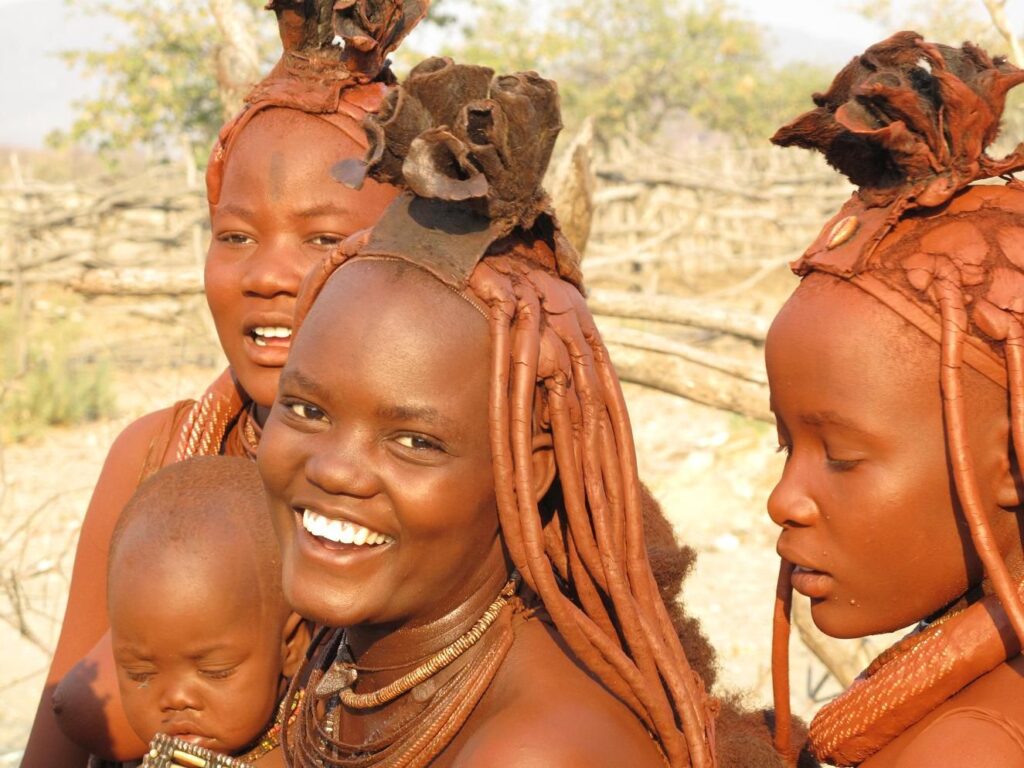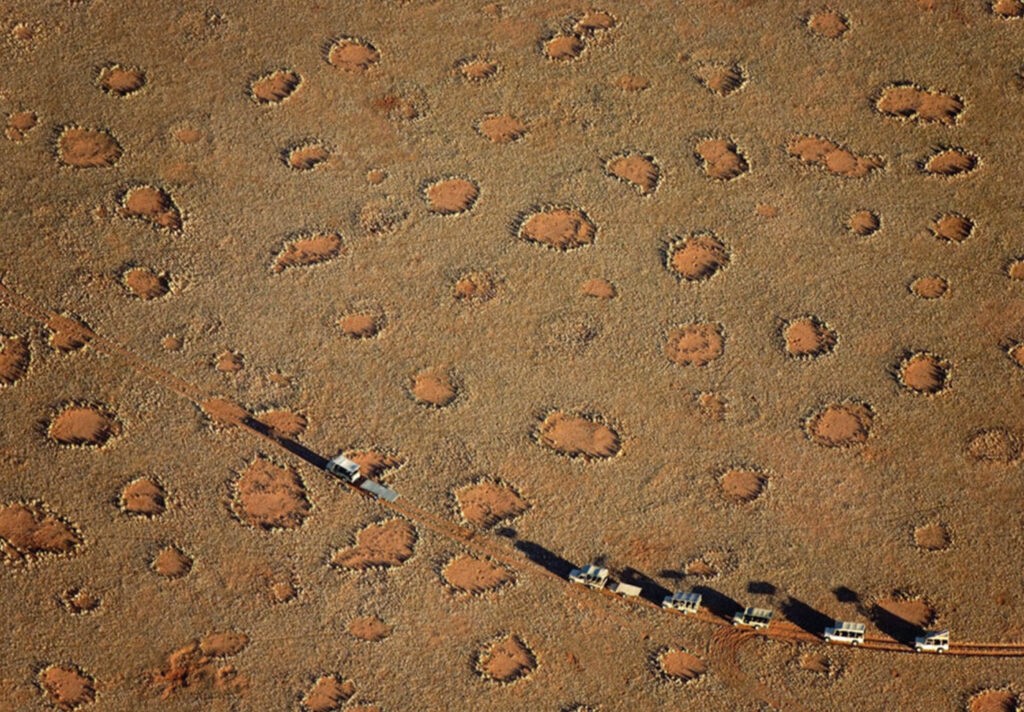Scattered across the golden grasslands of the Namib Desert, stretching from southern Angola to northern South Africa, lies one of nature’s most captivating enigmas: the fairy circles. These perfectly round, barren patches of earth, ranging from a few feet to dozens of feet in diameter, form intricate patterns across the landscape, resembling the spots on a leopard’s coat or the honeycomb of a giant, invisible hive. For decades, scientists, ecologists, and local communities have debated their origin, weaving together indigenous knowledge, ecological theories, and cutting-edge research to unravel the mystery.
A Natural Phenomenon Shrouded in Legend
To the Himba people, Namibia’s indigenous pastoralists, fairy circles are the footprints of the gods. According to oral tradition, the circles were created by Mukuru, the supreme deity, who left them as sacred spaces where the spirits of ancestors gather. Some legends say that a dragon beneath the earth breathes fire, burning the vegetation in perfect rings. Others believe they mark the places where celestial beings once touched the land.
These stories are more than folklore; they reflect a deep connection between the Himba and their environment, where nature’s patterns are not random but imbued with meaning. Western science, however, has long sought a different explanation, leading to a fascinating clash—and sometimes convergence- of worldviews.

For years, researchers have proposed competing theories to explain the fairy circles. One of the most prominent suggests that sand termites (*Psammotermes allocerus*) are the architects. According to this hypothesis, the insects clear vegetation to create water traps, allowing moisture to seep into the sandy soil and sustain their colonies. The barren patches then act as reservoirs, helping plants at the edges thrive in Namibia’s harsh, arid climate.
Another theory, known as the “self-organizing vegetation” model, argues that the circles are a natural result of plant competition for scarce water. In this view, grasses organize themselves in circular patterns to maximize water access, leaving empty spaces where nothing can grow.
Yet neither explanation fully satisfies. Some scientists point out that termites are not always present in the circles, and the self-organization theory struggles to explain why similar patterns don’t appear in other deserts with comparable conditions.
New Discoveries and the Role of Climate
Recent research has added another layer to the mystery. A 2023 study published in *Nature* suggested that fairy circles may be a rare example of an ecosystem adapting to extreme drought. Using satellite imagery and soil analysis, scientists found that the circles act as natural water distribution systems, allowing surrounding vegetation to survive prolonged dry spells.
This discovery aligns with indigenous perspectives, which have long viewed the circles as part of a delicate ecological balance. The Himba, who have lived alongside the circles for centuries, observe that certain medicinal plants grow more abundantly around them, hinting at a deeper symbiosis between the land and its inhabitants.
Namibia’s fairy circles have drawn comparisons to other natural oddities, such as the “nurse circles” of Australia’s outback and the patterned ground of the Arctic tundra. But unlike these phenomena, fairy circles exist nowhere else in the world with such precision and scale.

What the Fairy Circles Teach Us
The mystery of Namibia’s fairy circles is more than a scientific puzzle. It is a reminder of nature’s ability to create order in seeming chaos, and of the wisdom embedded in indigenous knowledge. While researchers continue to debate their origin, the Himba’s spiritual connection to the circles offers a different kind of understanding, one that sees them not as problems to be solved, but as wonders to be respected.
As Namibia faces modernization and climate change, the fairy circles stand as silent witnesses to the resilience of the natural world. They challenge us to look beyond easy explanations and to listen, not just to data, but to the stories of the people who have lived with them for generations.
In the end, perhaps the circles were never meant to be fully explained. Perhaps their magic lies in their mystery.















